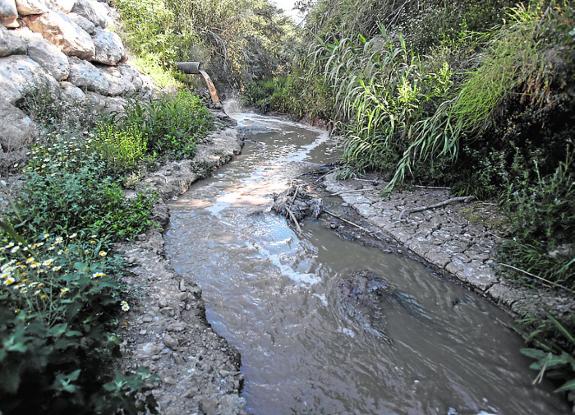

Sections
Highlight

FRANCISCO JIMÉNEZ
Monday, 17 August 2020, 18:20
Compartir
The time when sewage is no longer released into the Guadalhorce river is getting closer, but it is still going to take at least three years before the biggest river in the province no longer receives waste from Alhaurín el Grande and Cártama. Once Coín is connected to the Bajo Guadalhorce treatment plant (which currently serves Álora and Pizarra) in the autumn, these will be the only two municipalities in the area with no sewage facilities.
This problem will be overcome by the metropolitan treatment plant which is being constructed by the Junta de Andalucía. As well as treating the sewage from these two towns, this will also ease pressure on the one on the Guadalhorce industrial estate, as it will serve Alhaurín de la Torre and the Malaga districts of Santa Rosalía, Maqueda, Santa Águeda, Castañetas and Campanillas, as well as future development to the north and west of the city.
The project, which will cost about 130.2 million euros, is being financed through the extra charge which has been applied to consumers' water bills since May 2011. It is expected to take three years to build and set into operation, but could be shorter depending on the conditions of the contract. Even so, the most optimistic scenario would be for it to begin functioning in 2023.
The plans will remain on public display until 9 September, and then the project will be put to tender. The contract is expected to be awarded by the end of this year.
Details
The sewage plant, which will be called Málaga Norte, is to be built on a site north of the airport and will be able to treat 70,000 cubic metres of waste a day (the equivalent to a population of 280,000 ). It will also incorporate a tertiary system so recycled water can be used to irrigate green zones or agricultural plantations.
The plans also include 7.3 kilometres of pipes between the new plant and the one on the Guadalhorce industrial estate. The plant will be built in an elevated location (18 metres above sea level) to ensure it is not affected by possible flooding from the Guadalhorce river.
Although the Junta de Andalucía will be financing the works, it will be the councils affected (Malaga, Torremolinos, Alhaurín de la Torre, Cártama and Alhaurín el Grande) who will pay for it to be set into operation and its maintenance, either by forming an organisation for this purpose or, as Malaga council has suggested, this could be carried out by the municipal water company Emasa and each municipality would pay an extra charge for the service.
Publicidad
Publicidad
Publicidad
Publicidad
Reporta un error en esta noticia
Necesitas ser suscriptor para poder votar.